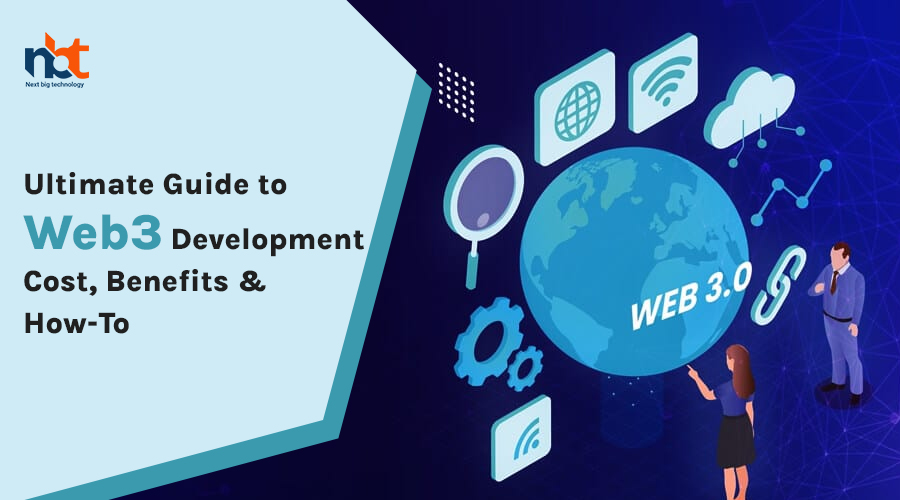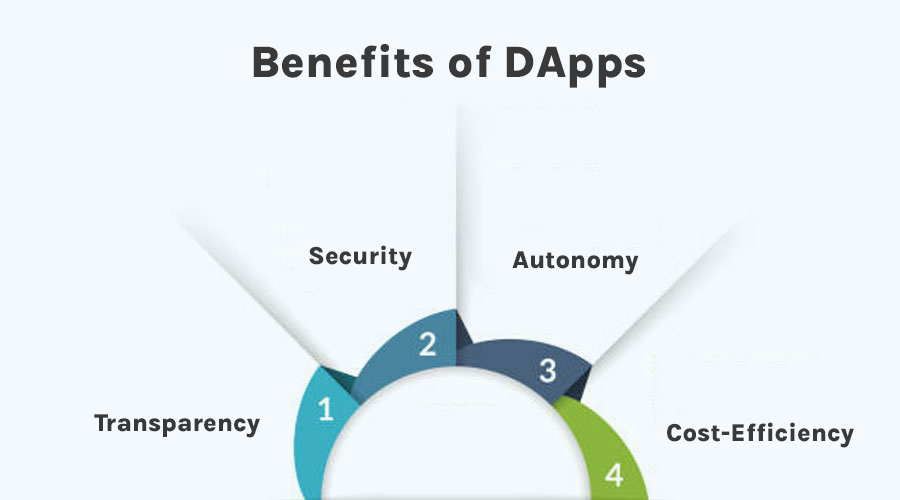Table of Contents
Understanding the Basics of Web3 Development
In the ever-evolving landscape of technology, the term “Web3” is gaining momentum, promising a paradigm shift in how we interact with the internet. Understanding the basics of Web3 development is not only crucial for tech enthusiasts but for anyone curious about the future of the digital world.
What is Web3?
Before delving into Web3 development, let’s grasp the concept of Web3 itself. Web3 represents the next phase of the internet, characterized by decentralization, peer-to-peer interactions, and blockchain technology. Unlike its predecessors, Web1 and Web2, which are primarily centralized and controlled by corporations, Web3 aims to empower users by giving them more control over their data and digital identities.
The Pillars of Web3 Development:
- Blockchain Technology: At the core of Web3 lies blockchain, a decentralized and immutable ledger. Blockchain ensures transparency, security, and trust in Web3 applications (dApps). Developers leverage blockchain platforms like Ethereum, Solana, and Polkadot to build decentralized applications that run on a network of nodes rather than centralized servers.
- Smart Contracts: Smart contracts are self-executing contracts with the terms of the agreement directly written into code. These contracts automate and enforce agreements without the need for intermediaries. Ethereum’s Solidity is a popular programming language used to write smart contracts, enabling developers to create a wide array of decentralized applications, including decentralized finance (DeFi) protocols, non-fungible tokens (NFTs), and decentralized autonomous organizations (DAOs).
- Decentralized Storage: Traditional web applications store data on centralized servers, making them vulnerable to censorship and data breaches. Web3 developers utilize decentralized storage solutions like IPFS (InterPlanetary File System) and Filecoin to store data in a distributed manner, ensuring resilience and data sovereignty.
- Identity and Authentication: Web3 introduces novel approaches to identity and authentication, shifting from centralized login systems to decentralized identity protocols. Decentralized identifiers (DIDs) and verifiable credentials enable users to control their digital identities and selectively disclose personal information without relying on third-party identity providers.
Getting Started with Web3 Development:
- Learn the Basics of Blockchain: Familiarize yourself with the fundamentals of blockchain technology, including its consensus mechanisms, cryptographic principles, and distributed ledger architecture.
- Explore Smart Contract Development: Dive into smart contract development by learning programming languages like Solidity or Rust. Experiment with deploying smart contracts on testnets to understand their functionality and potential use cases.
- Experiment with Decentralized Applications: Start building decentralized applications (dApps) using blockchain platforms like Ethereum or Solana. Explore existing dApps and contribute to open-source projects to gain hands-on experience in Web3 development.
- Stay Updated with Emerging Technologies: Web3 is a rapidly evolving field, with new technologies and protocols constantly emerging. Stay informed about the latest developments by following industry blogs, attending conferences, and engaging with the developer community.
Exploring the Benefits of Web3 Development
In the ever-evolving realm of technology, Web3 development stands as a beacon of innovation, promising a paradigm shift in the way we interact with the digital world. With its decentralized nature and blockchain backbone, Web3 presents a plethora of benefits that have the potential to revolutionize various sectors. Let’s delve into the manifold advantages that Web3 development brings to the table.
- Decentralization: At the core of Web3 lies decentralization, a principle that redistributes control from centralized authorities to a distributed network of nodes. This decentralization fosters transparency, eliminates single points of failure, and enhances security by thwarting potential cyber attacks and data breaches.
- Data Ownership and Privacy: In the traditional web model, user data is often monetized by centralized platforms without the user’s consent. Web3, however, empowers individuals by granting them ownership and control over their data through cryptographic techniques. This not only enhances privacy but also enables users to monetize their own data if they choose to do so.
- Interoperability: Web3 technologies facilitate seamless interoperability between different applications and platforms, allowing for efficient data exchange and communication across the decentralized ecosystem. This interoperability encourages collaboration and innovation, leading to the creation of robust and interconnected digital ecosystems.
- Smart Contracts: Smart contracts, self-executing contracts with the terms of the agreement directly written into code, are a cornerstone of Web3 development. These programmable contracts automate processes, reduce the need for intermediaries, and ensure trustless transactions, thereby streamlining operations and reducing costs across various industries.
- Tokenization and Digital Assets: Web3 enables the tokenization of assets, representing physical or digital assets as cryptographic tokens on a blockchain. This facilitates fractional ownership, increased liquidity, and enables new forms of value exchange and investment opportunities, thereby democratizing access to financial markets and assets.
- Censorship Resistance: Centralized platforms often exercise control over content, leading to censorship and limitations on freedom of speech. Web3, with its decentralized infrastructure, ensures censorship resistance, empowering individuals to freely express themselves without fear of interference or suppression.
- Community Governance: Web3 platforms often implement governance mechanisms that allow users to participate in decision-making processes, such as protocol upgrades and resource allocation. This community-driven governance ensures that the interests of stakeholders are aligned and promotes a more democratic and inclusive ecosystem.
- Immutable Record Keeping: The use of blockchain technology in Web3 development ensures that data stored on the blockchain is immutable and tamper-proof. This provides a transparent and verifiable record of transactions and activities, enhancing accountability and trust in the digital environment.
- Global Accessibility: Web3 technologies have the potential to bridge the digital divide by providing access to financial services, information, and opportunities to underserved populations worldwide. This global accessibility empowers individuals to participate in the digital economy on their own terms, regardless of geographical or socio-economic barriers.
- Innovation and Disruption: Finally, Web3 development fosters a culture of innovation and disruption, paving the way for novel applications and business models that were previously unfeasible. This continuous innovation drives progress and unlocks new possibilities, shaping the future of the digital landscape.
Factors Affecting Web3 Development Costs
In the dynamic realm of technology, the emergence of Web3 has sparked a paradigm shift, redefining how we interact with the internet and digital assets. With its decentralized architecture, blockchain integration, and emphasis on user empowerment, Web3 presents boundless opportunities for innovation. However, amidst the excitement, one crucial aspect demands attention: the cost of Web3 development.
Understanding the intricacies of Web3 development costs is paramount for businesses and entrepreneurs venturing into this domain. While the landscape is rich with potential, navigating through the factors influencing costs is essential for effective budgeting and resource allocation. Let’s delve into the key elements shaping the financial landscape of Web3 development:
- Blockchain Infrastructure: At the core of Web3 lies blockchain technology, which serves as the foundation for decentralized applications (dApps) and smart contracts. The choice of blockchain platform, such as Ethereum, Binance Smart Chain, or Polkadot, significantly impacts development costs. Factors like transaction fees, scalability, and consensus mechanisms influence the overall expenses.
- Smart Contract Complexity: Smart contracts automate agreements and transactions on the blockchain, offering transparency and security. The complexity of smart contracts, including the number of functions, data storage requirements, and integration with external services, directly affects development costs. Highly intricate smart contracts necessitate more extensive development efforts and, consequently, higher expenses.
- User Interface (UI) and User Experience (UX): Crafting an intuitive and visually appealing UI/UX is crucial for driving user adoption in Web3 applications. Designing interfaces that seamlessly interact with blockchain protocols and wallets while ensuring a smooth user experience demands specialized skills. Consequently, UI/UX design constitutes a significant portion of Web3 development costs.
- Security Considerations: Security is paramount in the Web3 landscape, given the irreversible nature of blockchain transactions and the prevalence of hacking attempts. Implementing robust security measures, such as code audits, vulnerability assessments, and encryption protocols, is indispensable. However, ensuring comprehensive security adds to the overall development expenses.
- Integration with External Systems: Many Web3 applications require integration with traditional systems, such as payment gateways, databases, or identity verification services. Seamless integration with external APIs and systems necessitates additional development efforts, contributing to the overall project costs.
- Regulatory Compliance: Compliance with regulatory frameworks, such as Know Your Customer (KYC) and Anti-Money Laundering (AML) regulations, is essential for Web3 projects operating within legal boundaries. Ensuring compliance with evolving regulations demands meticulous planning and may incur additional expenses for legal consultations and compliance procedures.
- Scalability and Future Maintenance: Building scalable Web3 applications capable of handling increased user traffic and evolving market demands is crucial for long-term success. Scalability considerations, such as network congestion mitigation and capacity planning, influence development costs. Additionally, budgeting for ongoing maintenance and updates is vital to sustain the project’s viability over time.
Cost Analysis: Web3 Development vs. Traditional Development
In the ever-evolving landscape of technology, the emergence of Web3 has sparked a significant shift in how we approach development projects. Web3, with its decentralized architecture and blockchain-based infrastructure, promises enhanced security, transparency, and user control. However, as businesses consider adopting Web3 technologies, a critical question arises: how does the cost of Web3 development compare to traditional development methods?
Understanding Web3 Development
Web3 development encompasses a range of decentralized technologies, including blockchain, smart contracts, and decentralized applications (dApps). Unlike traditional centralized systems, Web3 applications operate on a peer-to-peer network, empowering users with greater ownership of their data and interactions.
The development process for Web3 projects involves specialized skills in blockchain technology, cryptography, and decentralized systems. Developers must navigate complex protocols and consensus mechanisms to ensure the integrity and security of the network.
Factors Influencing Cost in Web3 Development
- Technical Expertise: Building Web3 applications requires specialized knowledge in blockchain development frameworks such as Ethereum, Polkadot, or Solana. Developers proficient in these technologies often command higher rates due to their scarcity and in-demand skills.
- Smart Contract Development: Smart contracts, self-executing contracts with the terms of the agreement directly written into code, are a fundamental component of many Web3 applications. Developing, auditing, and deploying smart contracts entail additional costs compared to traditional contract management systems.
- Security Considerations: Security is paramount in Web3 development, given the immutable nature of blockchain transactions. Extensive testing, code audits, and security measures are essential to mitigate the risk of vulnerabilities and potential exploits, adding to development costs.
- Infrastructure Costs: Web3 applications rely on decentralized networks, requiring nodes to validate transactions and maintain the integrity of the system. Deploying and managing these network nodes, along with associated hosting and storage costs, contribute to the overall expenses of Web3 development.
Cost Analysis: Web3 vs. Traditional Development
- Initial Investment: Web3 development typically entails higher initial investment compared to traditional development projects due to the need for specialized expertise and infrastructure setup. Businesses must allocate resources for training, hiring skilled developers, and establishing the necessary blockchain infrastructure.
- Long-Term Sustainability: While the upfront costs of Web3 development may be higher, proponents argue that the decentralized nature of Web3 applications offers long-term sustainability and resilience. Reduced dependency on centralized entities and enhanced transparency can mitigate risks associated with system failures or data breaches.
- Scalability and Interoperability: Traditional development methods may offer greater scalability and interoperability in certain scenarios, especially for applications requiring high throughput and seamless integration with existing systems. Web3 technologies are still evolving to address scalability challenges inherent in blockchain networks.
- Regulatory Compliance: Compliance with regulatory frameworks adds another layer of complexity and cost to Web3 development, particularly in highly regulated industries such as finance and healthcare. Navigating legal requirements and ensuring compliance with data protection laws may incur additional expenses.
Setting Budgets for Web3 Projects
In the ever-evolving realm of technology, the emergence of Web3 has sparked a paradigm shift, offering decentralized, peer-to-peer solutions that redefine how we interact with the digital world. As businesses and developers venture into this exciting frontier, one crucial aspect to consider is setting budgets for Web3 projects. Crafting a solid financial plan is essential for navigating the complexities of this new digital landscape while ensuring the success and sustainability of your endeavors. Let’s delve into the intricacies of setting budgets for Web3 projects.
Understanding the Fundamentals of Web3 Projects
Before diving into budgeting specifics, it’s imperative to grasp the fundamentals of Web3 projects. Unlike traditional web applications, Web3 leverages blockchain technology, smart contracts, and decentralized protocols to create trustless, transparent, and secure ecosystems. These projects often involve decentralized finance (DeFi), non-fungible tokens (NFTs), decentralized autonomous organizations (DAOs), and more.
Factors Influencing Budgeting Decisions
- Project Scope and Complexity: The scope and complexity of your Web3 project will heavily influence budgetary considerations. Determine the features, functionalities, and technologies required, considering factors like smart contract development, blockchain integration, user interface design, and scalability.
- Technical Expertise: Assess the level of technical expertise needed to execute your project. Hiring skilled blockchain developers, smart contract auditors, and other specialized professionals may incur higher costs but is essential for ensuring the quality and security of your Web3 solution.
- Infrastructure Costs: Building on decentralized networks often involves utilizing blockchain infrastructure, such as Ethereum, Binance Smart Chain, or Polygon. Consider the associated gas fees, network congestion, and scalability solutions when estimating infrastructure costs.
- Regulatory Compliance: Compliance with regulatory requirements is crucial, especially in the rapidly evolving regulatory landscape surrounding cryptocurrencies and decentralized applications. Budget for legal consultations, compliance audits, and any potential regulatory hurdles specific to your project.
- Market Research and Marketing: Conduct thorough market research to understand your target audience, competition, and market trends. Allocate resources for marketing strategies, community building, and user acquisition to drive adoption and visibility for your Web3 project.
Budgeting Best Practices
- Define Clear Objectives: Establish clear and measurable objectives for your Web3 project, outlining key milestones and deliverables. This will help in accurately estimating costs and tracking progress throughout the development process.
- Allocate Contingency Funds: Factor in unforeseen challenges, delays, and additional requirements by allocating contingency funds within your budget. Flexibility is crucial in the dynamic and often unpredictable landscape of Web3 development.
- Prioritize Security and Quality: Prioritize security and quality assurance throughout every stage of development. Invest in rigorous testing, code audits, and security protocols to safeguard against potential vulnerabilities and ensure the integrity of your Web3 project.
- Iterative Development Approach: Adopt an iterative development approach, breaking down the project into manageable phases or sprints. This allows for continuous feedback, adaptation to evolving requirements, and efficient allocation of resources based on project priorities.
- Evaluate ROI and Sustainability: Continuously evaluate the return on investment (ROI) and long-term sustainability of your Web3 project. Monitor key performance indicators (KPIs), user engagement metrics, and revenue streams to make informed decisions and optimize resource allocation.
Hiring Resources: In-house vs. Outsourcing
In the dynamic landscape of business operations, one of the critical decisions that leaders often face is how to allocate resources efficiently. Among these decisions, the choice between hiring in-house talent or outsourcing certain functions holds significant weight. Both options offer distinct advantages and drawbacks, and understanding the nuances can help businesses make informed decisions tailored to their specific needs and objectives.
In-house Hiring: Cultivating Internal Expertise
When considering in-house hiring, businesses prioritize building a team of professionals who are fully integrated into the organizational culture. This approach fosters a sense of belonging and commitment among employees, which can translate into higher levels of motivation and productivity. In-house teams are often deeply familiar with the company’s goals, processes, and values, enabling them to align their efforts closely with organizational objectives.
Furthermore, having in-house talent allows for more direct control and oversight of projects and processes. Leaders can closely monitor progress, provide immediate feedback, and implement changes swiftly to adapt to evolving circumstances. This level of control can be particularly advantageous in industries where confidentiality, security, or regulatory compliance are paramount.
Additionally, in-house hiring facilitates knowledge retention and skill development within the organization. Employees have the opportunity to grow and advance their careers within the company, contributing to long-term stability and sustainability. Moreover, internal expertise can be leveraged across various projects and departments, maximizing the return on investment in talent development.
Outsourcing: Accessing Specialized Skills and Flexibility
On the other hand, outsourcing offers businesses the flexibility to access specialized skills and resources on-demand without the overhead costs associated with maintaining a full-time workforce. By partnering with external vendors or service providers, organizations can tap into a global talent pool and leverage expertise that may not be readily available internally.
Outsourcing certain functions can also yield cost savings, particularly in areas where economies of scale and efficiency gains can be achieved through external partnerships. Additionally, outsourcing allows businesses to scale their operations rapidly in response to fluctuating demand or project requirements, without the constraints of hiring and training new employees.
Moreover, outsourcing can provide access to cutting-edge technology, tools, and processes that may not be feasible to develop in-house. This can enable businesses to stay competitive and innovative in fast-paced industries where staying ahead of the curve is crucial for success.
However, outsourcing does come with its own set of challenges. Maintaining effective communication and collaboration with external partners requires careful management to ensure alignment with business objectives and quality standards. Moreover, outsourcing certain functions may entail risks related to data security, intellectual property protection, and regulatory compliance, which necessitate robust contractual agreements and oversight mechanisms.
Making the Right Choice
Ultimately, the decision between in-house hiring and outsourcing should be guided by the unique needs, priorities, and circumstances of each business. It’s essential to conduct a thorough cost-benefit analysis, taking into account factors such as the nature of the tasks, the availability of talent, budget constraints, and strategic goals.
In many cases, a hybrid approach that combines in-house talent with strategic outsourcing may offer the best of both worlds. This allows businesses to retain core competencies internally while leveraging external expertise and resources where it makes the most sense.
By carefully evaluating the pros and cons of each option and aligning hiring decisions with overarching business objectives, organizations can optimize their resource allocation strategies and position themselves for long-term success in a competitive marketplace.
Tools and Technologies for Web3 Development
In the rapidly evolving landscape of web development, the emergence of Web3 technology is reshaping the digital world as we know it. Web3 represents a paradigm shift towards a decentralized internet, powered by blockchain and cryptographic principles. Developers are diving into this exciting frontier armed with a plethora of innovative tools and technologies tailored for Web3 development. Let’s delve into some of the key players driving this transformation.
- Smart Contract Platforms: At the heart of Web3 development are smart contracts, self-executing contracts with the terms of the agreement directly written into code. Ethereum remains the leading platform for deploying smart contracts, offering robust support for decentralized applications (dApps). Other platforms like Polkadot, Cardano, and Solana are also gaining traction for their scalability and interoperability features.
- Blockchain Development Frameworks: Simplifying the process of building decentralized applications, blockchain development frameworks provide a comprehensive suite of tools and libraries. Frameworks such as Truffle and Embark streamline smart contract development, testing, and deployment, empowering developers to focus on building innovative solutions without getting bogged down by low-level complexities.
- Decentralized Storage Solutions: Traditional centralized storage solutions come with inherent vulnerabilities and single points of failure. Decentralized storage platforms like IPFS (InterPlanetary File System) and Filecoin offer a distributed alternative, enabling secure and censorship-resistant storage of data and content for Web3 applications. These platforms leverage peer-to-peer networks to store and retrieve data across a decentralized network of nodes.
- Web3 Development Languages: While Solidity remains the go-to programming language for writing smart contracts on the Ethereum blockchain, developers are exploring alternatives to address scalability and security concerns. Languages like Rust (used in projects like Polkadot) and Move (developed by Facebook for the Diem blockchain) offer compelling alternatives with features tailored for Web3 development.
- Identity and Authentication Protocols: Identity and authentication are fundamental components of Web3 applications, facilitating trust and security in decentralized environments. Protocols like Ethereum’s ERC-725 and ERC-735 provide standards for managing decentralized identities, enabling users to maintain control over their digital identities and interact securely with dApps.
- Oracle Services: Bridging the gap between blockchain networks and external data sources, oracle services play a crucial role in enabling smart contracts to interact with real-world data. Platforms like Chainlink provide decentralized oracle networks, ensuring the integrity and reliability of data feeds for Web3 applications across various use cases, including decentralized finance (DeFi), gaming, and supply chain management.
- Development Toolkits and IDEs: Equipping developers with the right set of tools is essential for accelerating the development process and fostering innovation in Web3 space. Integrated development environments (IDEs) such as Remix and Visual Studio Code with blockchain extensions offer comprehensive toolkits for writing, testing, and deploying smart contracts, complete with features like syntax highlighting, debugging, and code analysis.
- Scalability Solutions: Scalability remains a key challenge for widespread adoption of Web3 applications, particularly in the face of growing demand and network congestion. Layer 2 solutions like Optimistic Rollups and Plasma provide off-chain scaling solutions, alleviating the burden on the main blockchain while maintaining security and decentralization.
Best Practices for Web3 Development
In the digital era, the emergence of Web3 technology has sparked a paradigm shift, revolutionizing how we perceive and interact with the internet. Web3, built on blockchain and decentralized protocols, promises a future where users have greater control over their data and transactions. However, venturing into Web3 development requires adherence to best practices to ensure efficiency, security, and scalability. Let’s delve into the essential guidelines for crafting robust and sustainable Web3 applications.
- Understand the Fundamentals: Before diving into Web3 development, it’s crucial to grasp the foundational concepts of blockchain, decentralized networks, smart contracts, and cryptographic principles. A solid understanding of these fundamentals lays the groundwork for building reliable and secure applications.
- Choose the Right Blockchain Platform: Selecting the appropriate blockchain platform is pivotal in Web3 development. Consider factors such as scalability, consensus mechanisms, development tools, and community support. Ethereum, Polkadot, and Solana are popular choices, each offering unique features suited to different use cases.
- Focus on Security: Security is paramount in Web3 development due to the immutable nature of blockchain. Implement robust security measures such as secure coding practices, comprehensive testing, and regular audits to mitigate vulnerabilities and protect user assets from potential threats.
- Prioritize Interoperability: Interoperability enables seamless communication and data exchange between different blockchain networks and protocols. Embrace standards like ERC-20 and ERC-721 for tokenization and NFTs, respectively, to enhance compatibility and foster integration with existing ecosystems.
- Embrace Decentralization: Emphasize decentralization in your Web3 applications to promote transparency, censorship resistance, and user sovereignty. Distribute data and decision-making processes across a network of nodes to eliminate single points of failure and enhance resilience.
- Optimize Gas Usage: Gas fees, the transaction fees on blockchain networks, can significantly impact user experience and adoption. Optimize smart contracts and transactions to minimize gas usage without compromising functionality or security, ensuring cost-effective operations.
- Implement Scalability Solutions: Scalability remains a challenge in blockchain technology, hindering widespread adoption and usability. Explore layer 2 solutions, sharding, and off-chain protocols to enhance throughput and accommodate growing user demands without compromising performance.
- Ensure User Experience: User experience plays a pivotal role in the success of Web3 applications. Design intuitive interfaces, streamline onboarding processes, and provide clear guidance on interacting with decentralized features to enhance usability and accessibility for users of all levels.
- Stay Compliant with Regulations: As the Web3 landscape evolves, regulatory compliance becomes increasingly important. Stay informed about relevant regulations and compliance frameworks in your jurisdiction, especially concerning digital assets, identity verification, and data privacy.
- Engage with the Community: The Web3 ecosystem thrives on collaboration, innovation, and community engagement. Participate in forums, developer communities, and open-source projects to share knowledge, gain insights, and contribute to the advancement of Web3 technology.
Building Decentralized Applications (DApps)
In the fast-paced world of technology, where innovation is the key to progress, decentralized applications (DApps) stand as a testament to the evolution of traditional applications. These groundbreaking creations are reshaping the digital landscape, offering unparalleled transparency, security, and autonomy. In this article, we delve into the essence of DApps, exploring their architecture, benefits, and the transformative impact they are poised to have on various industries.
Understanding Decentralized Applications (DApps)
Decentralized applications, or DApps, are a novel breed of software applications that run on a decentralized network of computers rather than a single central server. Unlike conventional applications, which rely on centralized servers to function, DApps operate on blockchain technology, utilizing smart contracts to execute transactions and maintain consensus across the network.
At the heart of every DApp lies blockchain technology, a distributed ledger that records transactions in a secure and immutable manner. This decentralized architecture ensures that DApps are inherently resistant to censorship, fraud, and third-party interference, thereby fostering trust and transparency among users.
The Architecture of DApps
The architecture of DApps comprises three key components:
- Blockchain: The underlying blockchain serves as the foundation of the DApp, providing a transparent and tamper-proof ledger for recording transactions and data.
- Smart Contracts: Smart contracts are self-executing contracts with the terms of the agreement directly written into code. These contracts automate the execution of transactions and enforce the rules of the DApp, eliminating the need for intermediaries.
- Decentralized Storage: DApps often utilize decentralized storage solutions, such as IPFS (InterPlanetary File System), to store data in a distributed manner, ensuring resilience and accessibility.
Benefits of DApps
The adoption of decentralized applications offers a myriad of benefits, including:
- Transparency: DApps operate on transparent, auditable ledgers, fostering trust and accountability among users.
- Security: The decentralized nature of DApps makes them inherently secure against cyber attacks and data breaches, as there is no single point of failure.
- Autonomy: DApps enable users to retain control over their data and assets, eliminating the need for intermediaries and enabling peer-to-peer interactions.
- Cost-Efficiency: By eliminating intermediaries and reducing overhead costs, DApps offer cost-efficient solutions for various use cases, such as financial transactions, supply chain management, and decentralized governance.
The Impact of DApps on Industries
The potential applications of DApps span across a wide range of industries, including finance, healthcare, supply chain management, and more. Here are a few examples of how DApps are revolutionizing traditional industries:
- Finance: DApps are disrupting the financial sector by enabling peer-to-peer lending, decentralized exchanges, and transparent asset management, thereby democratizing access to financial services.
- Healthcare: In the healthcare industry, DApps are facilitating secure and interoperable sharing of patient data, enabling seamless collaboration among healthcare providers and improving patient outcomes.
- Supply Chain Management: DApps are enhancing transparency and traceability in supply chains, enabling stakeholders to track the journey of products from source to destination, thereby reducing fraud and ensuring product authenticity.
Top Ultimate Guide to Web3 Development Companies
In the dynamic realm of technology, where innovation drives progress, Web3 development companies stand at the forefront, pioneering the next generation of the internet. As blockchain technology and decentralized applications (dApps) gain momentum, the demand for proficient Web3 development services surges. For those navigating this landscape, understanding the top players in the field becomes paramount. Hence, let’s embark on an illuminating journey through the top Web3 development companies, unveiling their prowess, specialties, and contributions to the digital frontier.
-
-
Next Big Technology:

Focus Area
- Mobile App Development
- App Designing (UI/UX)
- Software Development
- Web Development
- AR & VR Development
- Big Data & BI
- Cloud Computing Services
- DevOps
- E-commerce Development
Industries Focus
- Art, Entertainment & Music
- Business Services
- Consumer Products
- Designing
- Education
- Financial & Payments
- Gaming
- Government
- Healthcare & Medical
- Hospitality
- Information Technology
- Legal & Compliance
- Manufacturing
- Media
-
- ChainSafe Systems: Specializing in blockchain protocol and infrastructure development, ChainSafe Systems stands as a beacon of innovation in the Web3 landscape. From building scalable blockchain solutions to contributing to open-source projects, ChainSafe has established itself as a trusted partner for projects seeking robust and secure decentralized ecosystems.
- OpenZeppelin: As security remains a paramount concern in the Web3 space, OpenZeppelin emerges as a guardian of trust and integrity. Renowned for its expertise in smart contract development and auditing, OpenZeppelin offers essential services to ensure the reliability and resilience of decentralized applications. With a focus on enhancing the security standards of the blockchain industry, OpenZeppelin continues to set the benchmark for secure Web3 development.
- HashCash Consultants: With a diverse portfolio spanning blockchain consulting, development, and implementation, HashCash Consultants caters to the evolving needs of the Web3 ecosystem. Recognized for its scalable and interoperable blockchain solutions, HashCash empowers businesses across various sectors, including finance, healthcare, and supply chain management. Through its innovative approach and strategic partnerships, HashCash remains a driving force in shaping the future of decentralized technologies.
- Altoros: Combining expertise in blockchain development with a focus on enterprise solutions, Altoros stands out as a prominent player in the Web3 landscape. With a client-centric approach, Altoros delivers tailored blockchain solutions to address the unique requirements of businesses seeking to leverage decentralized technologies. From proof-of-concept development to full-scale implementation, Altoros offers end-to-end services to drive innovation and transformation.
- ArcTouch: Recognized for its proficiency in Web3 application development, ArcTouch empowers businesses to harness the potential of decentralized technologies effectively. With a strong emphasis on user experience and scalability, ArcTouch crafts intuitive and robust dApps that resonate with users worldwide. Whether it’s building decentralized marketplaces or integrating blockchain into existing platforms, ArcTouch delivers cutting-edge solutions that redefine the digital experience.
- LimeChain: Positioned at the intersection of blockchain and Web3 technologies, LimeChain excels in delivering tailored solutions for startups and enterprises alike. With a focus on blockchain development, tokenization, and decentralized finance, LimeChain enables clients to unlock new opportunities in the digital economy. By leveraging emerging technologies and industry best practices, LimeChain empowers organizations to thrive in the decentralized era.
FAQs On Ultimate Guide to Web3 Development
In the fast-paced world of technology, keeping up with the latest trends is paramount. One such trend that has been gaining significant traction is Web3 development. As the digital landscape continues to evolve, understanding Web3 and its intricacies becomes essential for developers and businesses alike. To shed light on this innovative concept, let’s delve into some frequently asked questions (FAQs) surrounding the ultimate guide to Web3 development.
1. What exactly is Web3? Web3 represents the next evolution of the internet, characterized by decentralized protocols, blockchain technology, and peer-to-peer networks. Unlike its predecessors, Web3 aims to decentralize control, enhance security, and empower users by eliminating intermediaries.
2. How does Web3 differ from Web2? Web2, the current phase of the internet, is dominated by centralized platforms like Google, Facebook, and Amazon, which control user data and interactions. In contrast, Web3 prioritizes decentralization, enabling users to have ownership and control over their data through blockchain technology and decentralized applications (dApps).
3. What are the key components of Web3 development? Web3 development encompasses various components, including blockchain technology, smart contracts, decentralized storage, and decentralized finance (DeFi) protocols. Developers leverage these components to build dApps, NFT platforms, decentralized exchanges (DEXs), and other innovative solutions.
4. What programming languages are commonly used in Web3 development? While several programming languages can be used in Web3 development, Solidity is the most prominent language for writing smart contracts on Ethereum, the leading blockchain platform. Additionally, languages like JavaScript, Rust, and Python are often utilized for building dApps and interacting with blockchain networks.
5. How do I get started with Web3 development? Getting started with Web3 development requires a combination of technical skills and an understanding of blockchain principles. Beginners can begin by learning the basics of blockchain technology, exploring development frameworks like Ethereum and Polkadot, and experimenting with sample projects and tutorials available online.
6. What are the main challenges in Web3 development? Web3 development presents several challenges, including scalability issues, interoperability between different blockchain networks, security vulnerabilities, and regulatory uncertainties. Overcoming these challenges requires continuous innovation, collaboration, and adherence to best practices in blockchain development.
7. What are the potential applications of Web3 technology? The potential applications of Web3 technology are vast and diverse, spanning industries such as finance, healthcare, supply chain management, gaming, and social media. Some notable examples include decentralized finance (DeFi) platforms, non-fungible tokens (NFTs), decentralized identity solutions, and decentralized autonomous organizations (DAOs).
8. How can businesses leverage Web3 for growth and innovation? Businesses can leverage Web3 for growth and innovation by exploring new revenue streams, improving transparency and trust with customers, reducing transaction costs, and unlocking new business models enabled by decentralized technologies. Embracing Web3 can also provide a competitive advantage in an increasingly digital and decentralized economy.
9. What role does community play in Web3 development? Community plays a vital role in Web3 development, fostering collaboration, knowledge sharing, and innovation within the ecosystem. Developers, entrepreneurs, researchers, and enthusiasts come together to contribute to open-source projects, participate in hackathons, and build vibrant communities around emerging technologies.
10. What does the future hold for Web3 development? The future of Web3 development is filled with promise and potential, as it continues to disrupt traditional industries, empower individuals, and reshape the internet as we know it. As adoption grows and technology evolves, we can expect to see further advancements in scalability, usability, and interoperability, unlocking new possibilities for innovation and creativity.
Thanks for reading our post “Ultimate Guide to Web3 Development Cost Benefits & How-To”. Please connect with us to learn more about Best Ultimate Guide to Web3 Development .






















